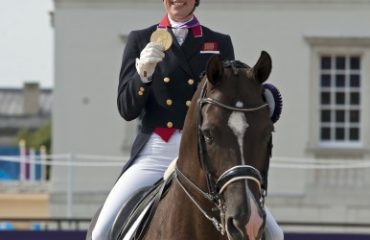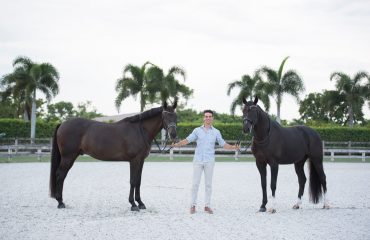By Rob Jacobs
Throughout the years, I’ve come into contact with a wide variety of riders across the country and there’s a large percentage of hunter-jumper riders that enjoy competing. Showing horses should be a fun way to challenge what you and your horse(s) have learned. Showing horses may ignite many feelings within us, whether it’s nerves, anxiety, courage or countless other emotions. I believe it to be healthy to learn to work through such a wide range of emotions. Although I support the benefits of showing horses, I believe there should be a balance between lessons and horse showing.
It’s very important in our sport for the rider to have a solid foundation and strong basics. As a USEF hunter and equitation judge, I unfortunately see riders competing at levels well above their competency. A lot of learning and growth happens at horse shows; however, traditional riding lessons cannot be replaced. Every professional who trains horses and riders has their own system that works for them. My system uses a lot of exercises to fill in the “gaps” of a student’s training. Although not excessive, these repetition-based exercises help the rider feel and understand a specific concept vital to their training. Lessons should be interactive, engaging, fun and used to build on previous lessons. I try to pick seasonal themes for my lessons. The theme for winter 2022 was “riding turns.” The theme of the summer was “paying attention to what riders feel.” Transitioning to the summer theme does not mean we ignore what was previously discussed and learned.
I frequently remind my students that homework is done during our lessons and the horse show is used to challenge ourselves and test the strength of the skills we’ve developed (refer to the August 2023 column for additional insight). I encourage every rider to take regular lessons regardless of their goals. I must admit, I become confused when I overhear certain things at the in-gate. I can tell by the rider’s demeanor and response they have no clue what their trainer is saying or what they mean. From this I get a sense the information is likely new. I only present new information to a rider during a lesson.
Personally, I discourage giving riders new information right before they enter the ring at a competition. When preparing to show, we talk about things we’ve done countless times at home. These reminders provide riders with a sense of familiarity and security. If something happens at a horse show that was unexpected, I may mention it briefly and a make a mental note; when we get home we need to work on the new challenge. Lessons are a great place to introduce the new challenge. There’s time to go into great detail and even reference what specifically happened at the previous horse show.
I recommend working with your trainer to determine appropriate degrees of challenge. Your trainer knows your riding habits and the habits of your horse, so they should be able to individually challenge you and your horse without asking more than you or your horse can handle at that time. Focus on one challenge at a time. It’s likely too difficult to share your focus, time and energy between more than one thing. Examples of challenges may include advancing to a higher and more competitive division, developing a true understanding for measuring the distance within a six-stride line, or even remembering all of the “inside” turns your trainer asked you to make in your equitation courses.
Invest in taking quality lessons with a trainer you trust. Learning to show horses and learning to ride are related but not completely identical. I encourage a system that places priority on learning to ride, and learning to show comes after that. Even if your goals are to qualify for Devon or Indoors, please place priority on learning to communicate with your horse better and improve your overall skills as a rider. Good luck this fall and remember to enjoy the journey.
Photo by Kris Moore













